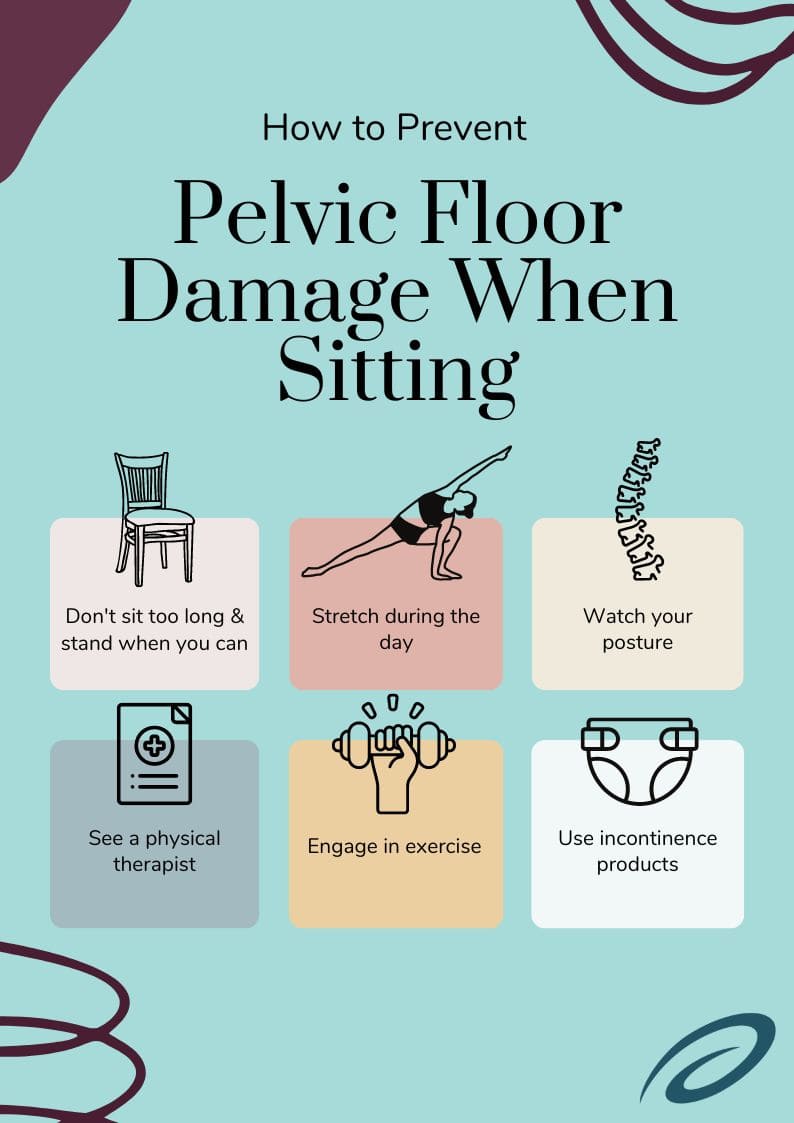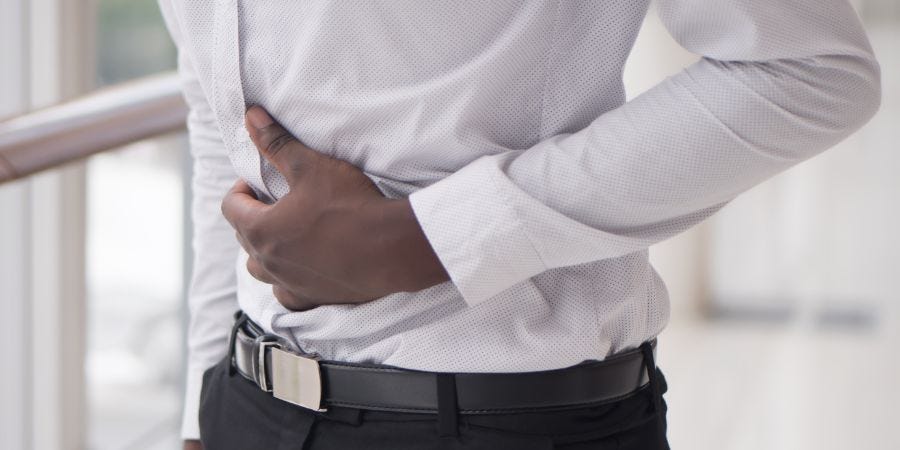You may have a job where you need to sit for hours. You sit down when you’re relaxing. You usually sit to eat breakfast, lunch, and dinner.
Suffice it to say, sitting is unavoidable for humans, but it can cause a significant amount of damage to our health, so much so that experts are now saying sitting is the new smoking.
Read this post to see if you’re sitting for too long and what you can do to keep your pelvic floor healthy.
Why Is Sitting Bad for Your Pelvic Floor?
It’s been reported that the average American adult sits for 6.5 hours every single day, or 2,373 hours per year!
While it may seem harmless and feel great at times, sitting for extended periods can harm your health, including your pelvic floor's health and continence.
So why is sitting so bad? Sitting can cause multiple health conditions, such as:
Check Your Eligibility
2 Easy Steps
Discover the continence care essentials available through your Medicaid plan.
- Diabetes
- Pelvic floor damage.
- Incontinence
- Decreased overall health.
- Weight gain or obesity.
- Pelvic pain.
- Back or spinal issues.
- Dementia
- Vascular problems.
- Heart disease.
- Depression
- Cancer
The Connection Between Sitting & Pelvic Floor
The pelvic floor is a crucial part of women’s health. Your pelvic floor is a group of muscles that control different functions, such as urination, bowel movements, and sexual function.
To imagine your pelvic floor, think about a “hammock” that stretches from the front of your pubic bone, your urethra, vagina, and sides of your abductor muscles to your rectum and coccyx (tailbone). This hammock holds your pelvic organs safely in place.
Your pelvic floor is also responsible for your continence (ability to urinate and defecate). If you have pelvic floor dysfunction where your pelvic floor is damaged or weakened, you may experience incontinence (loss of control of bladder and bowel muscles).
When you sit, you’re using your core. Your core consists of the diaphragm, trunk, obliques, and pelvic floor muscles. These muscles all help stabilize you and support your pelvis and spine.
If you are sitting with poor posture or sitting too long, your core and the parts of your body that make up that area, such as the pelvic muscles, can be impacted.
This can lead to pelvic floor disorders, pelvic pain, fecal incontinence, and urinary incontinence.
Alongside sitting for a long time, living a generally sedentary lifestyle can increase your chances of developing incontinence as you age. The decrease of movement causes your bladder tissues to overstretch from always sitting down, leading to damage.
Signs of Pelvic Floor Damage While Sitting
Signs that you may be inflicting damage to your pelvic floor muscles include:
- Pelvic pain.
- Urinary incontinence.
- Hip pain.
- Difficulty pooping,
- Urinary frequency or urgency.
- Back or abdominal muscle spasms.
- Lower back pain.
- Chronic pelvic or back pain.
- Pain that runs down your legs from your lower back.
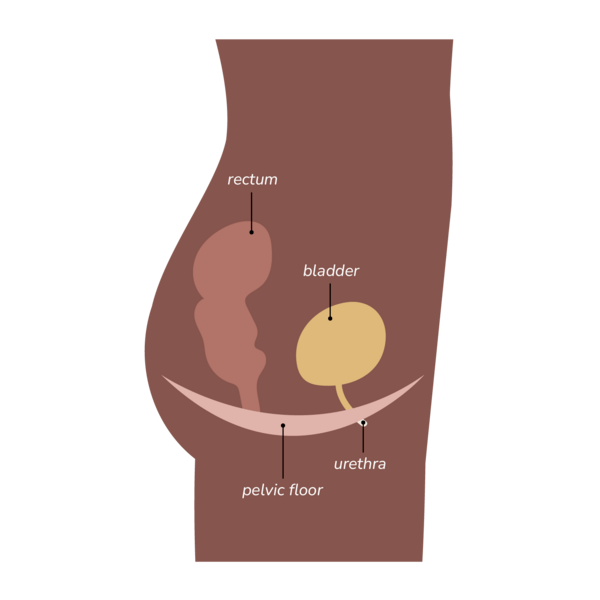

How Pelvic Floor Damage Happens
The main culprit of pelvic floor damage while sitting is posture.
The way you hold your body is called your posture, and it dictates the strength of our muscles, our stability, and the strain we put on our neck, back, and pelvic floor.
When sitting with good posture, your body places pressure on your sitting bones. Good posture strengthens your core and pelvic floor muscles, allows you to breathe deeply, and helps to align your muscles and spinal cord.
But, many people have bad posture. The American Chiropractic Association reported that more than 31 million Americans have poor posture. Bad posture occurs when you hunch over or lean forward, which tilts your pelvis forward and puts downward pressure on your pelvic muscles for an extended period. It also shortens your pelvic floor muscles and the abdominal muscles.
The longer you sit during the day, the more pressure you exert on the “hammock,” causing damage to your pelvic floor. This can lead to:
- Pelvic floor dysfunction.
- Pelvic organ prolapse.
- Back, spine, and neck problems.
- Damage to internal organs.
- General pelvic pain.
- Loss of bladder and bowel control (incontinence).
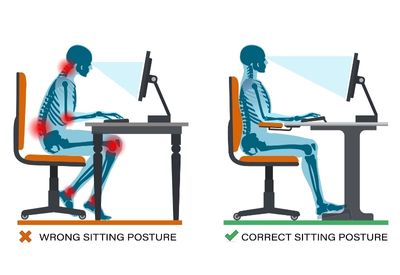

Sitting in a slumped-over position also decreases the activity of your side abdominal muscles (transverse abdominal muscles). Your transverse abdominal muscles play a big role in bladder functionality, so your bladder control is as well when they are damaged.
Pelvic Floor Damage & Incontinence
Your pelvic floor can be damaged when sitting, and if it’s damaged, it can lead to urinary or fecal incontinence. Incontinence is defined as the loss of bowel or bladder control, and it can interrupt your quality of life. The main types of incontinence related to pelvic floor dysfunction are:
- Stress urinary incontinence (SUI): Stress incontinence occurs when your urethra and urinary sphincter weaken. Because these parts are weak, they can’t properly hold in urine, and you may experience urine leakage when you cough, sneeze, laugh or engage in heavy lifting or exercise.
- Overactive bladder (OAB): The main symptom of OAB is needing to urinate more frequently than usual. Usually, if you have OAB, you void your bladder more than 8 times in a day and may get up to urinate at night.
- Fecal incontinence: Fecal incontinence is a loss of bowel control. When you have fecal incontinence, you may leak feces from your rectum or experience constipation.
While it is not a type of incontinence, pelvic floor dysfunction can also result in pelvic organ prolapse (POP). POP occurs when your pelvic organ structure is so weak that your organs fall out of their original positions. POP can cause pelvic pain, decreased sexual health, and bladder or bowel incontinence.
Preventing Pelvic Floor Damage
There are lots of ways you can avoid sitting for too long and even help strengthen your pelvic floor if it’s damaged.
1. Don't Sit for Too Long
Healthcare experts say you should sit for no more than 30 minutes at a time. It’s recommended that you get up for 5 minutes for every 30 minutes that you’re sitting. You should also never sit for more than 2 hours at a time.
2. Stretch During the Day
If you notice pain in your body or feel yourself falling into bad posture, do some stretching when you take a break from sitting.
Try to take a stretch break every 30-45 minutes while sitting. Set a timer to help you remember to stand up (there are several apps as well) or remember to get up every hour.
3. Watch Your Posture
Posture is the main reason for pelvic floor muscle damage. Improve your posture by rolling your shoulders back and squeezing shoulder blades together. This elongates the abdominals and untucks the pelvis.
Sitting on an exercise ball v.s. a hard chair helps to take pressure off the lower back and pelvic floor muscles and allows for proper posture.
4. Stand When It's Possible


Sometimes we are forced to sit down, but you can use other opportunities to stand up when it’s possible. For example, try a standing desk, take breaks to stand during work, infrequently stand at meals, or stand while watching television.
5. Stay Active
Exercise can improve health issues that sitting for too long can cause, such as cardiovascular disease or depression. Cardio activities, such as running or swimming, are good for your health. Avoid exercises that involve sitting or putting pressure on your pelvic floor, such as cycling.
6. Do Kegel Exercises
Kegel exercises are a type of pelvic floor muscle exercise that can significantly improve your pelvic floor strength. These exercises can also improve incontinence symptoms over time.
7. Use Incontinence Products
If you experience incontinence due to pelvic floor damage, incontinence products may help manage symptoms. Products such as bladder control pads and adult briefs can keep you dry. You can receive free incontinence products through Aeroflow Urology. Find out if you qualify today by filling out our 5-minute Eligibility Form!
8. See A Physical Therapist
A physical therapist may be helpful if you’re experiencing pelvic or back pain. You may also want to see a pelvic floor therapist for damaged pelvic muscles. If you can't leave the house, it's also possible to attend virtual pelvic floor therapy sessions or exercise classes.
How Aeroflow Urology Can Help
If you’re managing incontinence, Aeroflow Urology may be able to help by providing you with free incontinence supplies through your Medicaid or other insurance plans.
How It Works
Follow these steps to see if you qualify to receive incontinence supplies covered by your insurance.
- Fill out our eligibility form. It takes under 5 minutes– just have your insurance card at hand.
- If you qualify, one of our Continence Care Specialists will help you find the perfect products for your lifestyle and specific needs.
- Once you choose your supplies, they’ll be shipped to your home in discreet packaging. We send reminders each month, and after you restock, you’ll never have to worry about running out of incontinence supplies again!
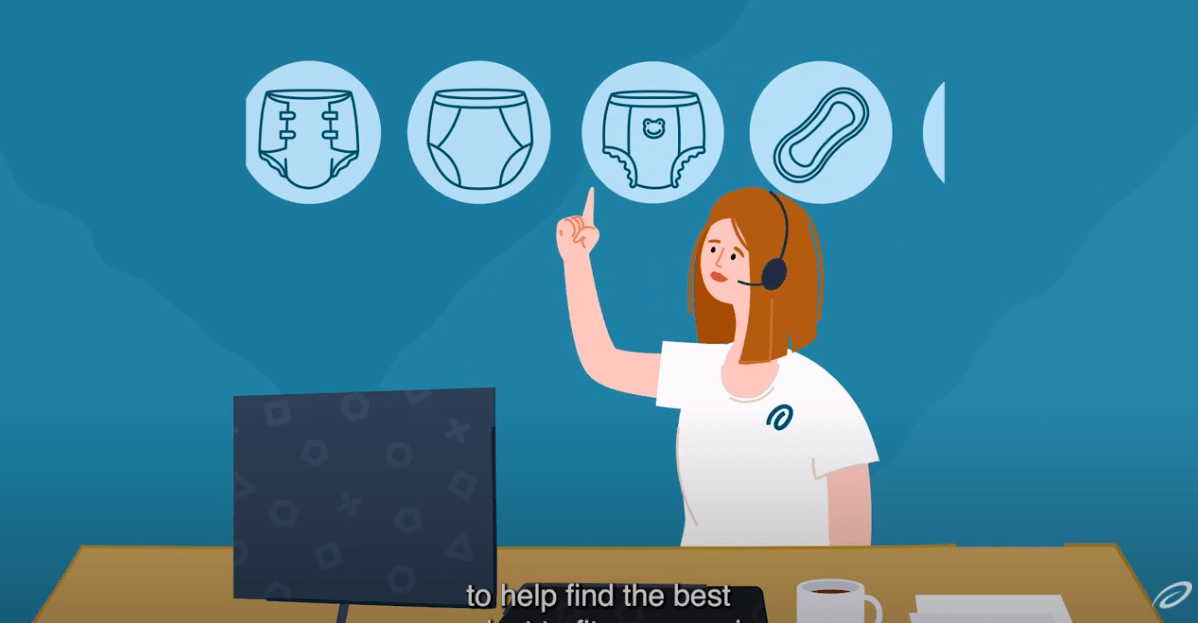
Searing, L. (2019, April 28). The Big Number: The average U.S. adult sits 6.5 hours a day. For teens, it’s even more. Washington Post. https://www.washingtonpost.com/national/health-science/the-big-numberthe-average-us-adult-sits-65-hours-a-day-for-teens-its-even-more/2019/04/26/7c29e4c2-676a-11e9-a1b6-b29b90efa879_story.html
British Heart Foundation. (2016, March 30). Sitting down. Bhf.org.uk; British Heart Foundation. https://www.bhf.org.uk/informationsupport/heart-matters-magazine/activity/sitting-down
Health experts have figured out how much time you should sit each day. (2015, June 2). The Washington Post. https://www.washingtonpost.com/news/wonk/wp/2015/06/02/medical-researchers-have-figured-out-how-much-time-is-okay-to-spend-sitting-each-day/
Top 5 Most Common Causes of Poor Posture. (n.d.).Www.hullchiropractic.com. Retrieved April 11, 2022, fromhttps://www.hullchiropractic.com/blog/283705-top-5-most-common-causes-of-poor-posture#:~:text=According%20to%20a%20study%20done
Information provided on the Aeroflow Urology website is not intended as a substitute for medical advice or care from a healthcare professional. Aeroflow recommends consulting your healthcare provider if you are experiencing medical issues relating to incontinence.



